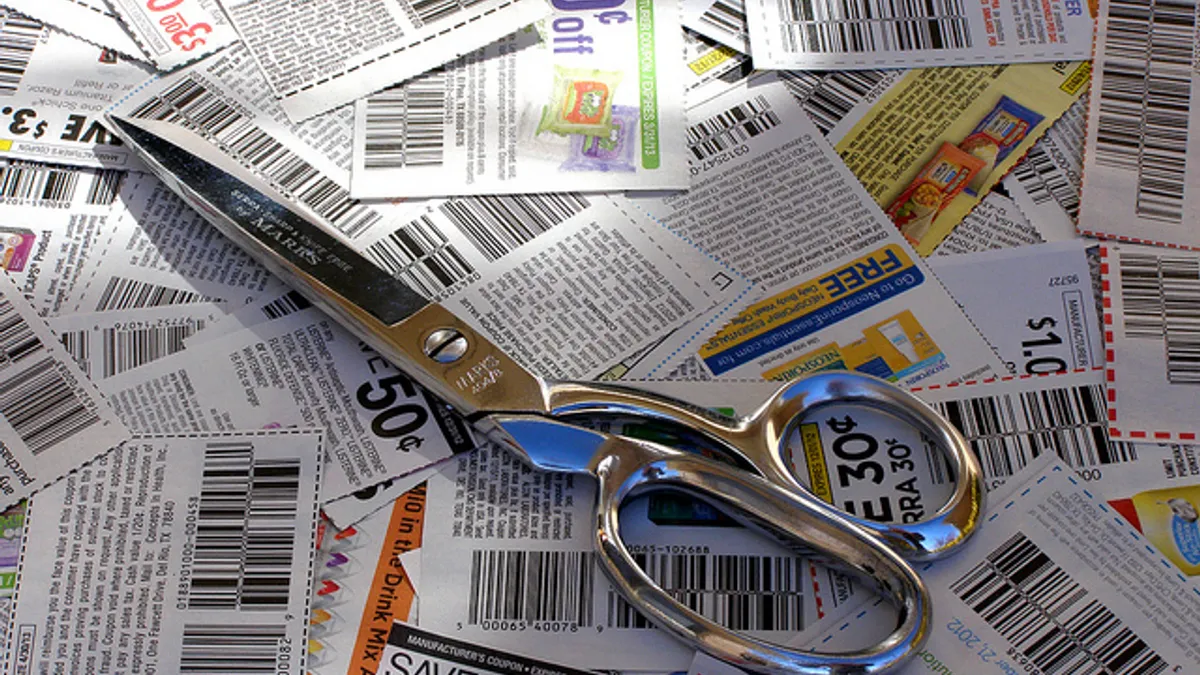Nick Minnick is the director of retailer development at digital shopper marketing platform Chicory.
There’s no doubt that one of the biggest shifts in grocery this year has been the migration of shopper marketing budgets to digital tactics, underscored by the distribution of printed coupons dropping by 14.7% year-over-year in the first half of 2020. While this has been an ongoing trend over the past few years, the pandemic has sped up e-commerce adoption by retailers and consumers, eroding the effectiveness of print promotions.
Aside from simply needing to learn new consumer shopping habits, retailers are faced with accommodating increases in the usage of digital shopping tools. Consider a recent survey from Acosta that found that 58% of Americans are comfortable using digital tools for grocery shopping. Additionally, more than six in 10 shoppers use at least one grocery retailer’s app, and 26% use it to view store circulars.
This is a welcome change for the thousands of brand marketers who have been insisting that retailers need to get onboard the omnichannel train for years. Here are three areas where we're already experiencing this disruption, which give a glimpse at how brands and retailers will need to continue to respond.
Servicing low-income shoppers online
As the threat of a recession still looms, online grocery has adjusted to service more financially impacted consumers. Chicory’s survey of 1,086 consumers in September indicates that 70% are more price-sensitive when shopping for groceries in Q4.
Some grocery retailers, most recently Aldi, are responding by enabling Supplemental Nutrition Assistance Program (SNAP) consumers to pay for online purchases with their electronic benefit transfer (EBT) cards. The U.S. Department of Agriculture has recently expanded its SNAP Online Purchasing Pilot program to include more grocery retailers, including independent grocers.
Combined, the consumer shift to digital grocery shopping as well as more financially concerned consumers means that both retailers and brands need to shift the ways they market to these particular consumers, who historically have shopped solely in-store using SNAP benefits. As SNAP becomes available online, an entirely new subset of shoppers will become available to retailers and brands, who will need to turn to different forms of promotions other than print coupons. According to CreditDonkey, 87% of low-income households look for coupons.
Discounting services instead of products
While Kroger maintained its print circular throughout the pandemic, unlike many other grocery retailers, pickup fee waivers were a core part of its promotional strategy to capture the surge in online grocery users throughout this year. Kroger simultaneously continued building and leveraging its reliable online grocery platform by offering personalized digital offers and promotions to consumers, helping to protect market share.
We’ve also seen many retailers launch new loyalty programs or enhance their existing programs to focus on service rather than products. Hy-Vee recently launched a membership service offering free grocery delivery and Walmart announced that Walmart+ members would no longer need to meet a $35 minimum for free delivery. Other retailers like Meijer have offered free grocery pickup on orders over $50.
Although retailers aren’t doing away with classic promotional discounts on products, many promotions are focusing on services instead, indicating that consumers aren’t only concerned with the affordability of products, but rather how economical the entire grocery shopping experience can be.
Strategic activations between brands and retailers
While grocery shopping has been slower to move online, the shift has accelerated during the pandemic and the industry is projected to reach $250 billion in five years. While brick and mortar stores will remain an essential part of the grocery shopping experience for consumers, retailers and brands need to more strategically coordinate the ways that they can offer meaningful touchpoints to omnichannel consumers.
It’s not enough to just make grocery shopping accessible online. Rather, both grocers and brands need to think about the full path to purchase and consider that many more consumers will begin their shopping journeys online or, at least, they will interact with some digital touchpoint while planning grocery purchases.
For instance, as more consumers search for food inspiration through social media channels than ever before, brands may consider activating a shopper marketing campaign to promote a product with a particular retailer by making their recipe content shoppable directly through, say, an Instagram post or Pinterest pin. All items for a chosen recipe would be added to the cart with the click of a button. Additionally, brands can make sure their promotional products are prioritized in the cart and also strengthen their relationship with that particular retailer by ensuring that all of the other products are the retailer’s own brands.
Whether these digitally communicated promotions end up converting brick-and-mortar or online shoppers, they’re effective ways to reach shoppers very early on in the purchase journey.




















